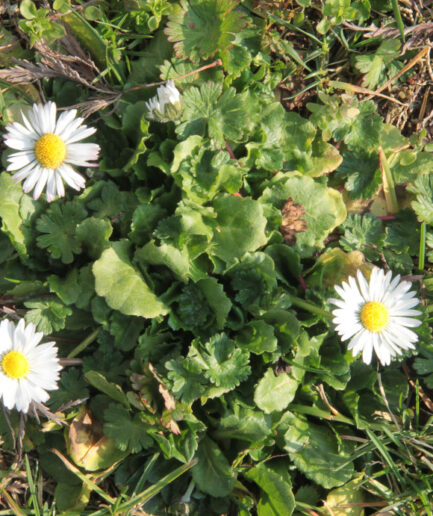Hairy Bittercress
Scientific name: Cardamine hirsuta L.
Family: Brassicaceae
MORPHOLOGY
Habit and dimensions: Annual herbaceous plant, highly polymorphic, with a slender taproot; height 3-25 cm.
Stems: Erect-ascending stems, generally numerous, branching at the base, striated, subglabrous with sparse spreading hairs (>0.3 mm) in the lower part and often violet-colored at the top and on the siliques.
Leaves: Basal leaves in rosette, persistent during anthesis, petiolate, lyrate-pinnatisect, divided into 4-8 pairs of oval or suborbicular segments, obtusely lobed, with a larger reniform apical segment; the smaller cauline leaves, from 2 to 6, are 1-6 cm long, without basal auricles and with subopposite spatulate-linear or cuneate-tridentate segments; tiny scattered hairs are present on the upper side and on the petioles of all leaves.
Flowers: Inflorescence in dense elongated corymbose racemes during anthesis, with about 15 pedicellate flowers. Sepals 1.5-2 mm, pubescent in the upper half. Corolla with 4 entire white petals (2.5-3.5 mm). It blooms all year round.
Fruits and seeds: The fruits are rarely present erect siliques formed by 2 flat valves arranged longitudinally, containing small seeds arranged linearly.
DISTRIBUTION AND HABITAT
Present throughout Italy. It grows in fallow lands, meadows, roadsides, vegetable gardens, riverbanks, walls, from 0 to 1400 m.
USE
It contains sulfur-rich organic compounds rich in vitamins and minerals, so it has vitaminizing, diuretic, tonic, anti-anemic, and antirheumatic effects. Before taking any plant-based product (medicinal or non-medicinal) for therapeutic or similar purposes, it is always advisable to consult a doctor beforehand. Furthermore, the leaves, with a spicy taste similar to watercress, are often added to flavor salads, soups, and side dishes.
Photo: Used under a free license from Saxifraga and Ed Stikvoort, Jan van der Straaten, Rutger Barendse.





















